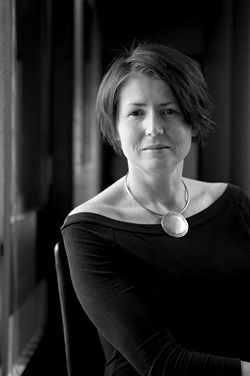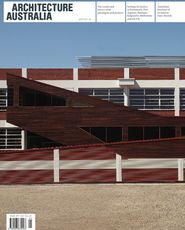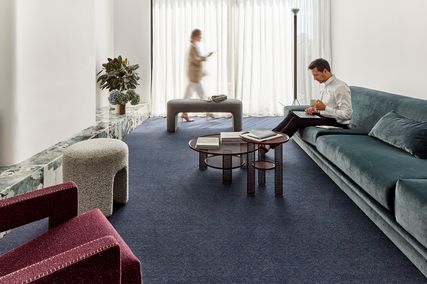
As a profession, we understand that sustainable cities will rely on turning off the suburban sprawl and convincing the mainstream market to value smaller, well-designed homes close to city and town centres. However, a large proportion of construction industry business is derived from strong market demand for more suburban development. Do our construction industry colleagues share our ambitions?
Michael Wellsmore, head of the ACT Real Estate Institute, has successfully sold real estate over many years, which he attributes to “tuning in” to what motivates people. The answer, Michael says, is that we need to work with “how people are wired”. That is, sustainable lifestyles (and the architectural and urban environments that support them) must bring a reward to individuals. We must start showcasing the “hip-pocket and heart” benefits of sustainable cities, particularly the cost savings of reduced heating and cooling, water consumption and use of cars, and the social and health benefits of walking or cycling to our destinations.
“If we care about environmental sustainability,” says executive director of the Property Council of Australia Catherine Carter, “it makes sense to reduce our dependence on cars. Urban infill brings homes to the heart of things – close to shops, workplaces, services and entertainment facilities. They make better use of existing infrastructure. And they make it easier to choose the healthier transport options of foot or cycle-power.”
This all appears rational and sensible, so let’s just get on with it! However, more emotionally compelling than any of these arguments is that Australians seem “hard wired” to make “progress”, which to many is represented by the quarter-acre block. There is still much to be done to find the “sustainable product” a solid market.
Master Builders Association director John Miller insists there has been a shift in demand for living closer to major town centres. “Building and construction industry training is now focused on the shift toward sustainability and ‘being green’.” John is confident his industry is adapting. “At a residential level the industry is now seeing statistically the growth in remodelling of existing homes and urban redevelopment.”
Michael, too, feels that the preferences of generations X and Y and our ageing population are increasing acceptance of inner-city and compact residences. Open-plan living with more “overlapping” functions has helped. But these factors only lessen a worsening situation; on average our houses have nearly doubled in size since the 1970s, and with almost half the household occupants. Falling population densities have led to a loss of neighbourhood amenities, including shopping centre and school closures or consolidations. Low densities also risk creating security and safety issues, with community surveillance often lost and isolated neighbourhood pockets created instead.
Governments urgently need to raise awareness and offer incentives for more sustainable behaviours. The building industry and architects have a role to play through exemplar sustainable projects which demonstrate the alternatives; however, habit and certainly that all-too-human unwillingness to sacrifice immediate gain for long-term benefit drag on the pace of change. Initial capital cost and expenditure, for example, are still primary drivers when purchasing a house, and operational costs including heating, cooling and travel to work are almost hidden by comparison.
Our other obstacle is our natural attraction to displays of status and wealth as the hallmarks of “progress”, and government and industry leadership is needed to create a new “green” status. There are signs that this has started, but our actions are not yet sufficient to slow climate change.
And finally, there remains a community suspicion of density, which means architects have got to get better at painting a positive vision of a post-carbon world. According to Catherine, “Increased density … can foster the creation of intimate and welcoming public spaces, and keep alive areas which otherwise retreat into hibernation outside of business hours. The opportunity to create intimate, leafy and pleasant public spaces is frequently grasped, particularly if planning authorities prove encouraging.”
“Greenfield development will continue,” says John. But the commercial success of apartment-style living, close to amenities with more centrally located homes, indicates that people want a range of house types. “It may not suit everybody’s lifestyle choices,” says Catherine, “but carefully located, increased density completes the range of choices … we need to keep our community healthy and vibrant.”
Melinda Dodson
National President, Australian Institute of Architects















